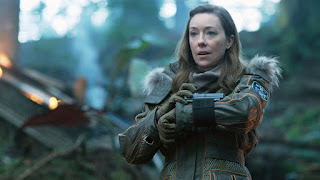Fans of both The Falcon and The Saint will be pleased to know there were two new books recently published, taking into full account the radio programs of the same name. Author Ian Dickerson is responsible for both publications, released through his independent Purview Press.
Simon Templar, better known as “The Saint,” began as a series of dime novels, later adapted for the big screen, comic-strips and multiple television series (starring Roger Moore and Simon Dutton). A recent television pilot was filmed for a revival of The Saint, which failed to capture interest with a network, but thankfully we have the RKO classics available commercially on DVD to enjoy. To date, at least 15 actors have played the role of Simon Templar and when one thinks of the radio program, they tend to think of Vincent Price – who once quipped, “I really enjoyed playing The Saint.”
The Saint on the Radio is aptly titled as the history of the novels, motion-pictures, comic-strips and other mediums are not covered extensively here. After all, there is already an all-inclusive book documenting the history of the franchise. Instead, Dickerson chose to focus on what has often been dismissed by biographers of Leslie Charteris, creator of the Simon Templar character.
Beginning with Terence de Marney as The Saint over the BBC Forces Band, first transmitted in October of 1940, the book extensively covers the history of future incarnations from Edgar Barrier (early 1945), Brian Aherne (summer of 1945), Vincent Price (1947-1951), to Paul Rhys (1995). Also included is documentation of audio books, and a reprint of two radio scripts (one written by singer-actor Dick Powell). A major portion of the book consists of an episode guide but the history of the program, including behind-the-scenes documentation for each incarnation, is a fascinating read.
Of greater interest was Dickerson’s Who is The Falcon?, a comprehensive history of the fictional detective that is considered by many as a bland imitation of the Leslie Charteris character. Guy Stanhope Falcon, the freelance adventurer and trouble-shooter, originated from Michael Arlen’s 1940 short story. To others he is Guy Lawrence, the English gentleman detective portrayed by George Sanders in the RKO films of the early 1940s. “Ready with a hand for oppressed men, and an eye for repressed women,” The Falcon character was once referenced in Leslie Charteris’ 1943 novel, The Saint Steps In, as “a bargain-basement imitation.”
Very little has been written about The Falcon, which is why I was pleased to see the fictional character and the franchise documented extensively. Commentary on the character’s birth in print, a complete overview of his time on the silver screen, a broadcast log of his adventures on radio (both in the United States and in Australia), and an accounting of the short-lived television program is contained within the 360 pages. There is also a full reprint of a Falcon story from Radio Mirror magazine. Help show your support and display of thanks to Ian Dickerson for going to the effort by digging through archives to produce these welcome tomes.








